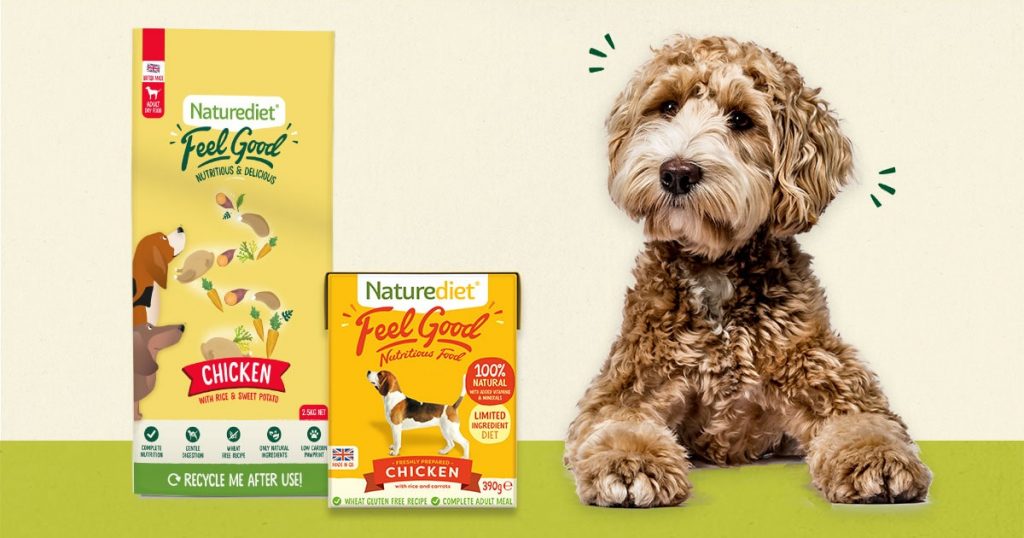Feeding a combined wet and dry diet
Written by Zoe Russell BSc (Hons)
Nutrition Officer, Naturediet

One of the most important choices we make for our dogs is what food they eat. Therefore, deciding on a dry diet, a wet diet, or a combination of both is an important choice to get right. This article aims to highlight the many benefits to feeding a combined wet and dry diet and why combination feeding is the ideal choice for many dogs and puppies.
Benefits of combination feeding
Feeding a mixed wet and dry diet can add a variety of tastes and textures to their meal. This makes it a perfect choice for fussy eaters or for those who aren’t very food-orientated that may benefit from a more interesting and varied diet.
Both wet and dry dog food have their own unique benefits, which when combined, allows you to get the best of both. Wet food has a higher moisture content than dry food, which can be beneficial when aiming to increase their water intake; it can be also useful for dogs who would benefit from a softer ‘bite’. Dry food, on the other hand, has a lower moisture content (usually 8-10%) making it more crunchy than wet food. This ‘crunchiness’ may also provide natural abrasion on the teeth, helping to support their dental health.
The ‘do’s’ and ‘don’ts’ of combination feeding
Our wet and dry foods are balanced to provide all nutrients a dog needs when the feeding guidelines are followed. Feeding guidelines differ between dry and wet diets, and these should be considered individually when combining the diets. For example, when feeding a ratio of 50:50, we recommend feeding 50% of the recommended amount of wet food, with 50% of the recommended amount of dry. This principle can be applied to other ratios too; for example, if feeding 75:25, then we would suggest feeding 75% of the recommended amount of wet with 25% of the recommended amount of dry. This helps to ensure the diet is balanced and complete by providing a full ratio of both foods.
In addition, if you are adding treats (or titbits!) to your dog’s diet, it’s important that these don’t substitute any more than 10% of their daily intake. We also suggest regularly monitoring their overall weight and condition, to enable you to monitor any changes and make appropriate dietary adjustments where needed.
Top tips for feeding a wet and a dry diet!
- Choose the ratio of wet and dry that suits your dog
Some four-legged friends prefer more wet food than dry, while others like a balance of both, so choose the combination that works for them. - Follow the Naturediet guidelines in the first instance
Don’t be afraid to make adjustments where required as these are just guidelines, and often need adjustment to suit their individual needs. - Remember to weigh their food
Where possible, weigh your dog’s food using accurate, calibrated scales. This helps to minimize the likelihood of over feeding or even under feeding!
Contact us
If you would like any help working out how much wet and dry to feed, then please contact our nutrition team at nutrition@naturediet.co.uk and we would be more than happy to help.